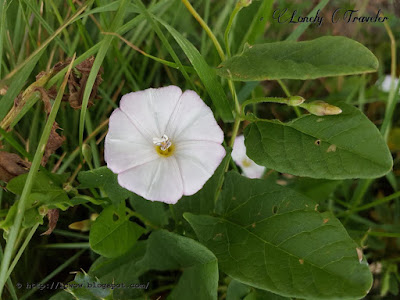| Common Name : | Field bindweed, Eurpoean bindweed, Wild morningglory. |
| Botanical Name : | Convolvulus arvensis |
| Family : | Convolvulaceae |
| Photo Taken : | Ireland |
Field bindweed is a small morning glory flower that is having other common names European bindweed, Wild morningglory, Annual bindweed, Orchard morningglory, etc. Botanical name of this wild flower is Convolvulus arvensis from the family Convolvulaceae. This flower is native to Europe and Asia.
Field bindweed (Convolvulus arvensis) is a perennial creeping or climbing weed that can grow up to 2 meter. This plant has two varieties, with broad leaf and narrow leaf. Photos of this article are having broad leafs. The leafs are arranged alternately and spirally around the stem. Leafs are having long petiole and they are arrow shaped.
Flowers of Field bindweed are typical morning glory like. Color of the flower is having white, pinkish white or Pale pink, etc. These funnel shape flowers occur during the summer (I've taken during July). Unlike the other morningglory these flowers are slightly smaller in size. A single flower comes from the axil of the stem and petiole of the plant. But as it grows plenty at a same time that's why looks like a cluster of flower bloomed. Flowers get closed during the rain or cloudy weather to protect it from damage.
This plant is a weed that grows around the agriculture area. But also seen around the other weed in garden or lawn. A single flower brings a capsule like fruit with two seeds which can remain dormant for many years until a suitable germination environment is found.
Photos of these Field bindweed (Convolvulus arvensis) were taken from Portmarnock, Ireland. It was the month of July of 2017.
This article has written by Lonely Traveler,
for the blog http://icflora.blogspot.com/






Comments
Post a Comment